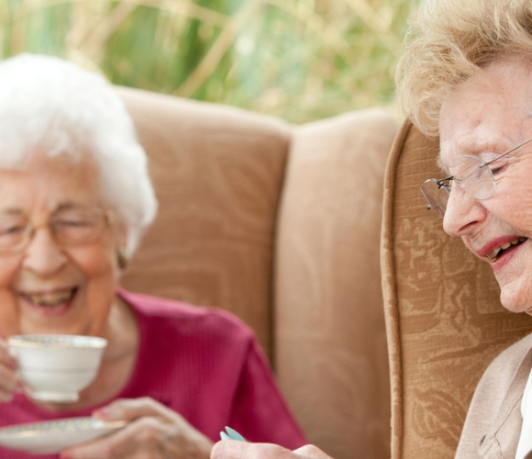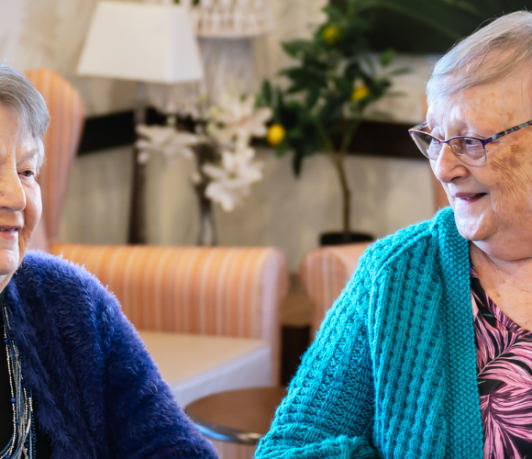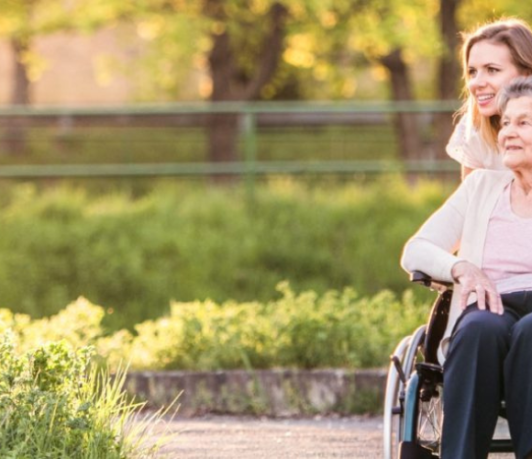Home Safety Checklist for Seniors: Creating a Secure Living Environment
Home Care |
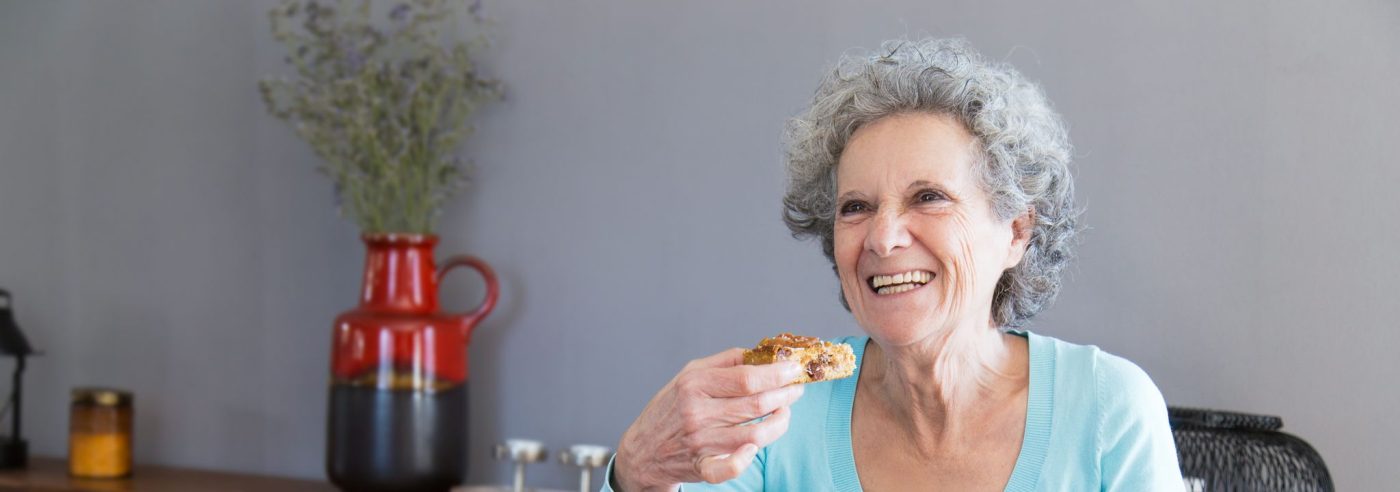
In this comprehensive safety checklist for seniors, we take a look at the many considerations and intricacies of creating a secure home environment – what it can include and involve, and how you can get started today.
1. Effective lighting and visibility
Lighting plays a pivotal role in preventing accidents and enhancing the overall safety of your home. Well-lit spaces significantly reduce the risk of falls and mishaps. It’s essential to ensure that key areas such as hallways, staircases, entrances, and commonly-used rooms are adequately illuminated. For example, installing motion sensor lights adds an extra layer of convenience, instantly brightening your path as you move around, especially during the night.
Moreover, consider the installation of nightlights in the bedroom, hallway, and bathroom. These small yet significant additions provide gentle illumination and alleviate the disorientation often experienced during low-light conditions.
2. Flooring and trip prevention
The type of flooring in your home can significantly impact safety. If possible, you should consider non-slip flooring options such as textured tiles, linoleum, or low-pile carpets. These materials provide traction and reduce the likelihood of slips, particularly in areas prone to moisture or spills. Additionally, secure area rugs with anti-slip pads or double-sided tape to prevent them from moving or bunching up, which can lead to trips and falls.
Be vigilant about keeping pathways clear of any obstructions. Loose cords, clutter, or objects in high-traffic areas pose a potential hazard and should be promptly addressed to maintain a safe environment.
For more strategies to reduce you or your loved one’s falls risk around your home, read our post about how to reduce the risk of falls at home.
3. Bathroom modifications
The bathroom presents unique challenges for older people due to its often slippery surfaces and confined spaces. Installing grab bars near the toilet and within the shower or bathtub is a proactive step towards enhancing safety. These bars provide much-needed support when sitting down, standing up, or manoeuvring in the shower.
To further reduce the risk of slips, consider using non-slip mats inside and outside the shower or bathtub. These mats provide traction on wet surfaces, creating a more secure bathing experience for you or your loved ones. Additionally, a raised toilet seat and a handheld showerhead can make daily hygiene routines more manageable, especially for those with mobility limitations.
4. Kitchen safety measures
The kitchen is a hub of activity, but it’s also a space where safety precautions are of particular importance. To promote both safety and convenience, organise kitchen items in a way that minimises the need for reaching, bending or stretching. Frequently used items should be within easy reach, while heavy or bulky items should be stored at waist level to avoid straining when they need to be accessed.
It’s also worth considering the use of modern kitchen appliances equipped with safety features. Automatic shut-off mechanisms can prevent accidents if appliances are inadvertently left on. Additionally, ensure that appliance cords are tucked away to prevent tripping hazards.
5. Home security systems
A comprehensive home security system is an investment in peace of mind. Equipped with smoke detectors, carbon monoxide alarms, and emergency buttons, these systems provide timely alerts and a direct line to emergency contacts and services when needed. If employed, you should regularly test and maintain these devices to ensure they function effectively in case of an emergency.
For older Australians living alone, wearable emergency buttons or pendants are valuable tools. These devices can be worn around the neck or wrist, allowing for quick and easy access to help in the event of a fall or medical issue.
6. Proper medication management
Managing medications can be complex, especially for seniors with multiple prescriptions. You can simplify this process by using a pill dispenser with compartments for different days and times. This approach not only reduces the risk of medication errors but also serves as a visual reminder for you or your loved ones.
Set alarms or reminders on clocks, phones, or dedicated medication reminder devices to ensure timely medication intake. Professional caregivers can play a vital role in medication management, helping older Australians adhere to prescribed regimens and avoiding potential complications.
7. Confidence through mobility aids
Mobility challenges should not hinder one’s ability to move about safely and confidently. Depending on individual needs, various mobility aids can provide the necessary support. A walking cane offers stability during ambulation, while a rollator provides a seat for resting and brakes for controlled movement.
Wheelchairs, whether manual or electric, offer a higher level of mobility for some seniors with significant mobility limitations. These aids are not just tools for movement – they are instruments to allow continued independence and engagement with the outside world.
8. Emergency plans for every scenario
Creating a comprehensive emergency plan is an essential aspect of home safety. Outline detailed instructions and contact information for loved ones and family members, neighbours and healthcare providers. Ensure that everyone involved is aware of the plan, and you may want to consider keeping a copy in an easily accessible location, such as on the refrigerator or near the phone.
Consider collaborating with neighbours or joining a community support network to enhance the effectiveness of your emergency plan. Regularly review and update the plan to reflect any changes in contact information, medical conditions or medications.
9. Furniture arrangement and clear pathways
Proper furniture arrangement contributes to an uncluttered and safe living environment. Arrange furniture to create clear pathways that allow for easy movement throughout the home. Avoid placing furniture in areas where it could obstruct walkways or create tripping hazards.
Anchor heavy furniture to the wall to prevent tip-overs, especially if you have limited mobility or are at risk of falls. Keep commonly used items within arm’s reach to minimise the need for unnecessary bending or stretching.
10. Accessible outlets and appliances
Ensuring that electrical outlets and appliances are accessible can significantly enhance the overall usability and safety of your home. For example, you could install power outlets at waist height to eliminate the need for bending down, reducing strain on the back and knees.
Choose appliances with user-friendly controls that have large, easy-to-read labels. Appliances with automatic shut-off features provide an added layer of safety by preventing potential hazards, such as leaving the stove or iron on unintentionally.
11. Regular home assessments
The dynamics of safety evolve as you and your loved one’s needs change over time. Regular home assessments, conducted as part of an ongoing commitment to safety, ensure that your living environment remains optimised for your well-being. These assessments should be performed periodically, ideally at least once a year, to identify potential hazards or areas for improvement.
During these assessments, consider factors such as changes in mobility, vision, or health conditions that might impact you or your loved one’s ability to navigate around the home safely. Evaluate the effectiveness of existing safety measures, such as grab bars and handrails, and make any necessary adjustments.
By remaining proactive in conducting regular home assessments, you demonstrate a dedication to maintaining a secure living environment that aligns with your evolving needs. Additionally, these assessments provide an opportunity to collaborate with caregivers, family members, or home care professionals, who can contribute valuable insights and recommendations based on their expertise.
In summary
We hope you found this safety checklist for seniors helpful to start creating a secure living environment for yourself and your loved ones. As you or your loved one gets older, it’s important to remember that the home is more than just a physical space – it’s a place of comfort, safety and emotional connection. By diligently considering the recommendations outlined in this blog, you can pave the way for a future that is not only safe but also fulfilling and enriched.
Through providers like Respect, which provide a range of dedicated home care services, you have access to a network of professionals who are committed to ensuring your future wellbeing and independence. These services extend far beyond practical assistance, they encompass emotional support, companionship, and a steadfast dedication to enhancing your overall quality of life.
Respect’s home care services
As the need for assistance grows, the availability of help and support becomes a cornerstone of maintaining independence and wellbeing. Through its home care services, Respect offers a range of tailored services designed to cater to older Australians’ unique requirements. From personal care and companionship to household chores and transportation, these services empower older Australians to continue living in the comfort of their own homes.
Trained caregivers provide not only practical support but also companionship and emotional wellbeing. The presence of a compassionate caregiver can alleviate feelings of isolation and ensure that you and your loved one receives the care and attention you both deserve.
We’re here to support you
At Respect, we’re passionate about supporting older Australians to ensure the next phase of their lives are filled with purpose and possibilities.
So whether it’s through our network or aged care homes or our home care support options, we are here for you and your family whenever you need us. Your future should shine with meaning, comfort and conveniences — and with our support, you’re backed by over a century of care and consideration for the way you want to live.
If you’re looking for more information about how to access a Home Care Package or get started with home care support, including the available opportunities and our range of services, start with downloading our free digital brochure.
Got questions or like to receive more support? Please reach us via our contact page or call us on 1300 144 144.
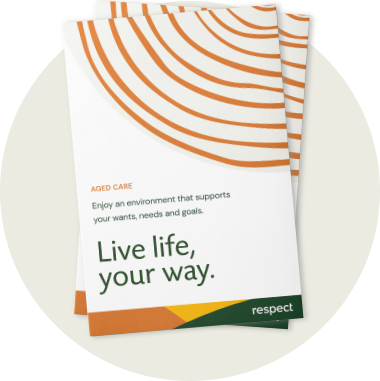
Book your free no-obligation consultation call
Simply fill in the below form and one of our expert Care Advisors will give you a call within 48 hours to discuss your home care options.
Would you rather talk to us? Give us a call on 1300 144 144
